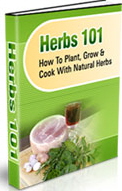History and Medicinal Uses
Dill grows plentifully in the Mediterranean region and southern parts of Russia, the regions where the plant originated. It has been cultivated since at least the Neolithic period. The stems and flowers have been found in tombs from several civilizations. It has been considered a valuable plant throughout its history. This plant has a large repertoire of medicinal uses, making it a good addition to any herb garden. It is prepared as essential oils, teas, or used in the diet to contribute its medicinal benefits. It has historically been used in European, African, Arabic, Egyptian, and Chinese cultures to help with ailments such as:
- Insomnia
- Headaches
- Colic
- Ulcers
- Kidney problems
- Eye disorders
- Indigestion
- Flatulence
- Low Energy
- Jaundice
- Low milk supply in nursing mothers.
It also exhibits antibacterial and antimicrobial properties.
Garden Tips
The dill plant is a relative of coriander and fennel. It is a great plant to have in an indoor or outdoor herb garden. Growing the plant takes a little bit of attention, but it’s not hard. The plant likes loose soil and sunshine. It usually requires minimal water and once it is established, it only needs to be watered when the soil and the environment becomes very dry. It is a delicate plant, so it doesn’t withstand wind very well; keep it in sheltered but sunny spot. It doesn’t compete very well with other plants, so its growing area within your herb garden needs to be free of weeds.
The flavor is better when grown in unfertilized soil. Also, don’t grow it near fennel or coriander, since cross-pollination ruins the flavors of the dill, coriander, and fennel. It takes about 7 days to germinate. The leaves are ready to harvest and use in about 30 days, and it takes about 60 days before the seeds are ready to harvest. They are a great companion for other vegetables and herbs in the garden, as they help to repel aphids. The roots reach fairly deep, so if you want to grow it in an herb garden container, try planting a dwarf variety.
Culinary Uses
The leaves give a fresh, zesty flavor to uncooked and cooked dishes. It is used in a large variety of dishes such as:
- Soups
- Fish
- Rice
- Pickles
- Salads
- Cooked potatoes
- Salsas
- Salad dressings
- Omelet’s
- Many more things.
A major key to successfully using it to flavor dishes is to use it fresh and not overripe.
Flavoring potatoes with the leaves and seeds is easy and provides a subtle yet incredible flavor.
Dill Boiled Potatoes
1-2 pounds of small red potatoes
Salt
Fresh dill leaves and stems
Softened salted butter
After piercing each end of the potatoes with a fork, boil the potatoes (uncut) until they are tender in salt water with cut herb stems and leaves. (Measurements are not exact – use your own judgment) In a separate dish, mix fresh leaves with softened butter. After the potatoes are cooled slightly, they can be cut open and mashed with a fork, with the butter mixture spread throughout. *Serve while potatoes are still hot enough to melt the butter.
Conclusion
This is a tasty, nutritive, and beneficial herb. If you are planning an herb garden, make space for dill plants!

